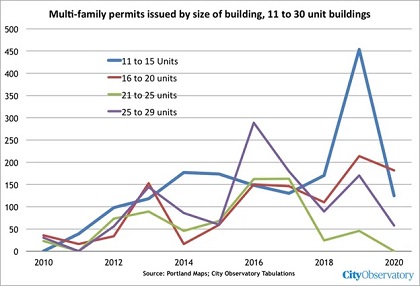Spoiler alert: Democrats in the Legislature aren’t helping the situation
Editor's note: This article was adapted from a presentation to clients of Portland area realtor Royce Rogers.
Oregon has a housing shortage. The Urban Growth Boundaries, created by Oregon's land use laws in the early 1970s, are filling up. Supply and demand drive prices of single-family homes to levels that are unaffordability. Apartments must provide a higher percentage of dwellings.
Unfortunately, new regulations show a disconnect between policy makers and the incentives that cause risk takers to build apartments. In December 2016, Portland’s City Council enacted a strong inclusionary housing requirement that all new apartment buildings in Portland would have to set aside a portion of their units for low- and moderate-income housing. The new requirement didn’t kick in until February 2017, and because the requirement applied to nearly all apartment buildings with 20+ units there was a land rush of developers who filed under the old rules which in turn produced a temporary flood of new apartment buildings, that have, over the past four years, mostly been built.
This decline in multifamily permits signals trouble for Portland's apartment supply for the coming years. While in the short-term rent increases have been minimal and supply has increased, national forecasters like Zillow are predicting a rapid rebound in demand for urban markets post-pandemic. That has owners of existing apartments with an excellent chance to profit in Portland as housing providers continue to stay one step ahead of politicians enacting feel-good ordinances. The new requirements have also signaled more permanent changes. One of the key aspects of the requirements is that it exempts buildings that have less than 20 units, which has prompted many developers to shift to smaller buildings.

This has also led developers to get creative as the requirement of 20 units only applies to a single building, meaning you can build multiple buildings in one development project. There is a good example in Northwest Portland where developer Noal Johnson is building eight five-story residential buildings which total to 145 units although each individual building contains less than 20.
Overall inclusionary zoning may have helped with supply and rents in the short term but the fact that very few new buildings are being built now will hurt Portland in the near future. The new apartments that aren’t being built now in Portland will almost certainly lead to higher rents and less affordability in the years ahead—exactly the opposite of the expressed intentions of those who enacted this policy.
--Tom Hammer| Post Date: 2021-03-18 16:26:05 | Last Update: 2021-03-18 11:58:43 |







 This has also led developers to get creative as the requirement of 20 units only applies to a single building, meaning you can build multiple buildings in one development project. There is a good example in Northwest Portland where developer Noal Johnson is building eight five-story residential buildings which total to 145 units although each individual building contains less than 20.
This has also led developers to get creative as the requirement of 20 units only applies to a single building, meaning you can build multiple buildings in one development project. There is a good example in Northwest Portland where developer Noal Johnson is building eight five-story residential buildings which total to 145 units although each individual building contains less than 20.